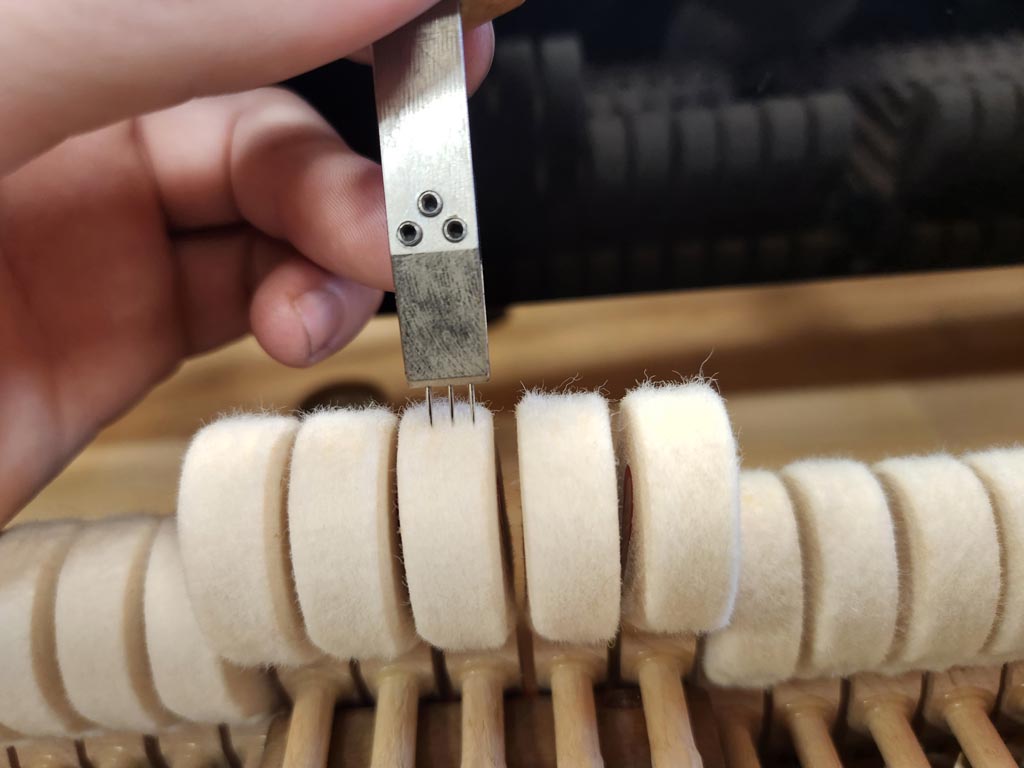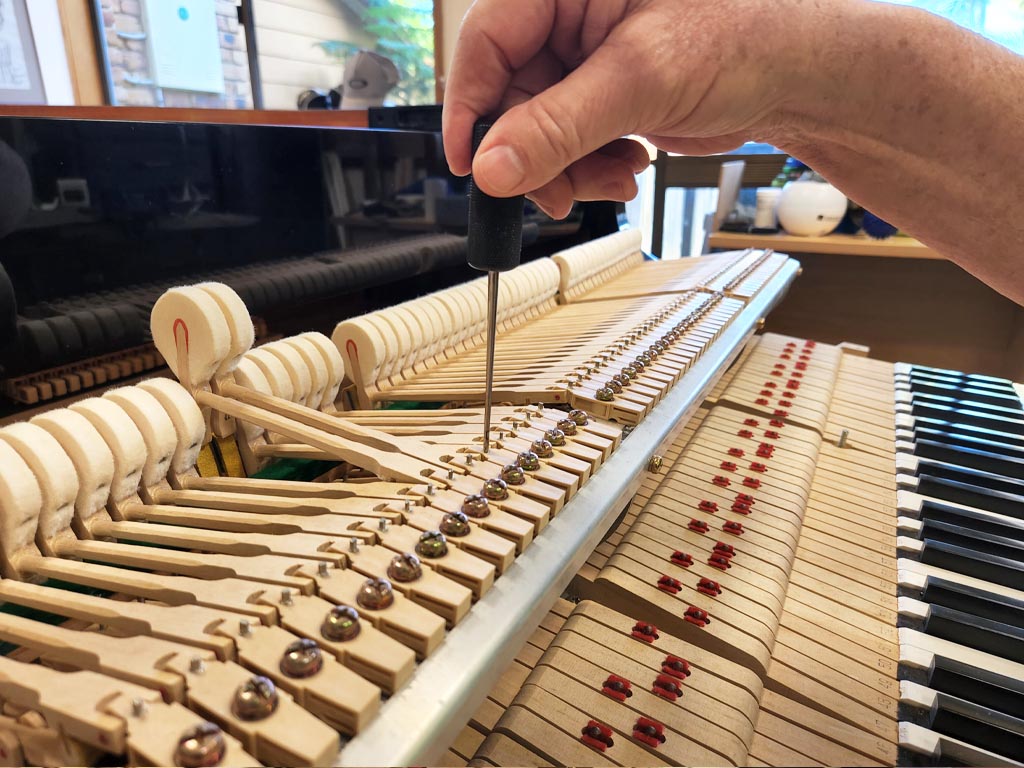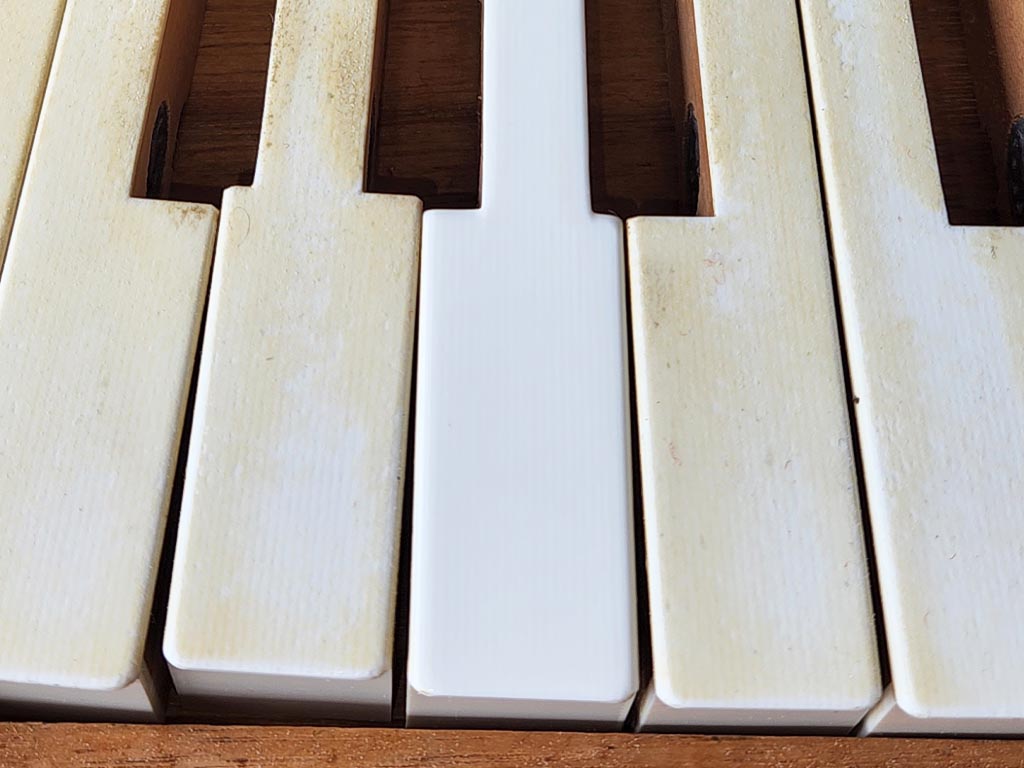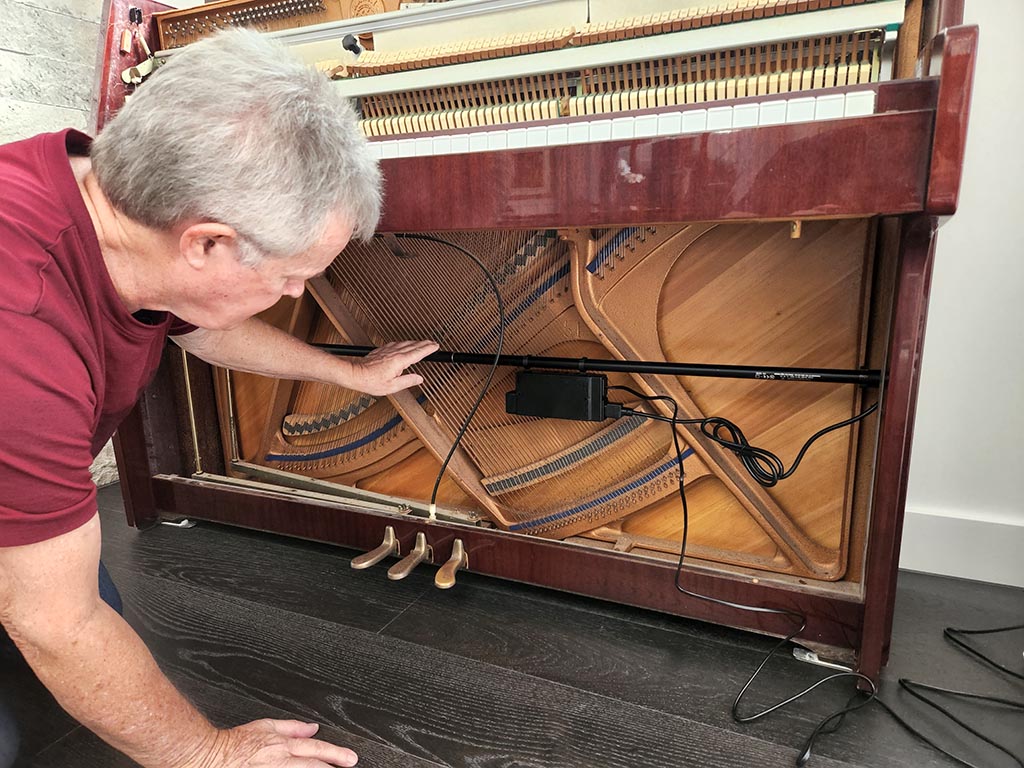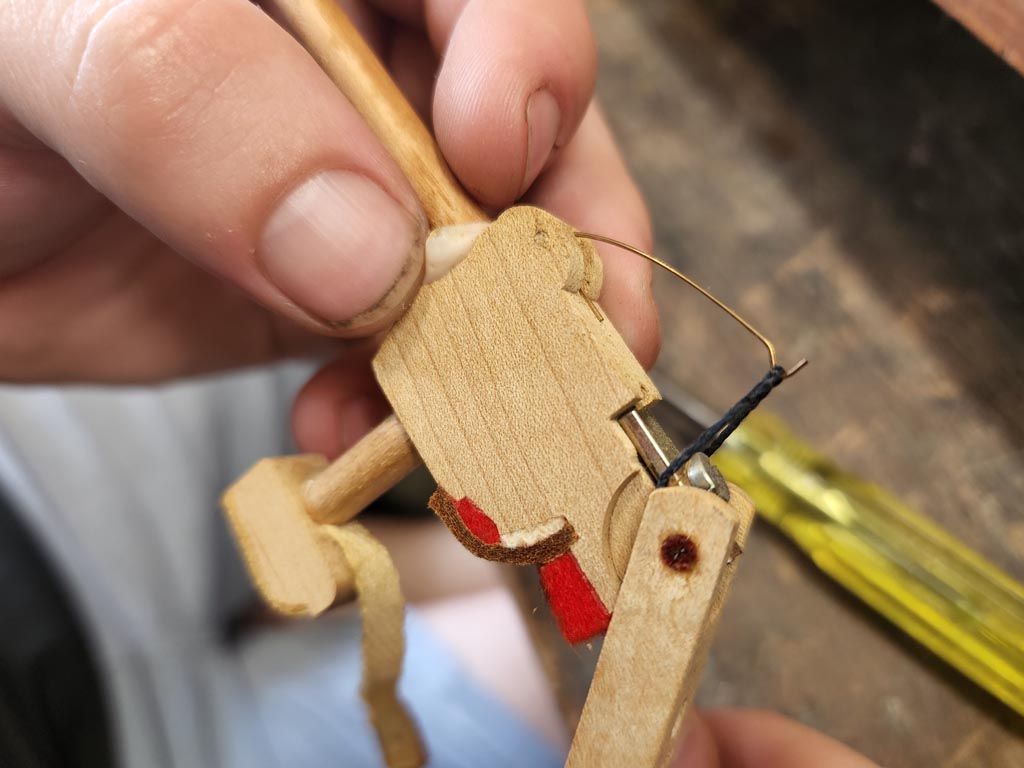PIANO repairs
Re-voicing Pianos
Your piano’s tone can be extremely different depending on your room.
When in a room with hard floors the tone could be quite bright. The same piano in a room with thick carpet and thick curtains could have a soft tone.
Re-voicing is the process of adjusting the hammer felts to produce the required tone.
PIANO repairs
Action Regulation of Pianos
Your piano has seven moving parts to make one note play. Each part must move in unison to play at its optimum.
When a piano leaves the factory, each of its parts is adjusted to a tolerance of a few tenths of a millimetre. This process is called action regulation because the wood and felt parts of the action can change dimension due to humidity and wear.
PIANO repairs
Cleaning Ivory Piano Keys
Modern pianos are manufactured with plastic key tops. These have replaced the more traditional ivory key tops which often became discoloured with age.
Cleaning ivory piano keys requires a very special set of skills.
PIANO repairs
Installing Dehumidifier in Piano
Your piano is a complex instrument made up of numerous moving parts …many of which are made of wood. These wooden parts swell slightly in a humid environment. This can cause sluggish responses and sticking notes.
A dehumidifier can be installed in your piano to control humidity levels. This will help with the prevention of sticking notes and will help to keep your piano in tune longer.
PIANO repairs
Loop Cord Repair
Loop cords are an important component of a piano’s action, and they play a vital role in ensuring that the hammers fall back to their correct position after being played.
However, over time, loop cords can perish and cause the notes to not play properly.
In this article, we will discuss the process of loop cord repair and how it can help to restore the proper function of your piano.
